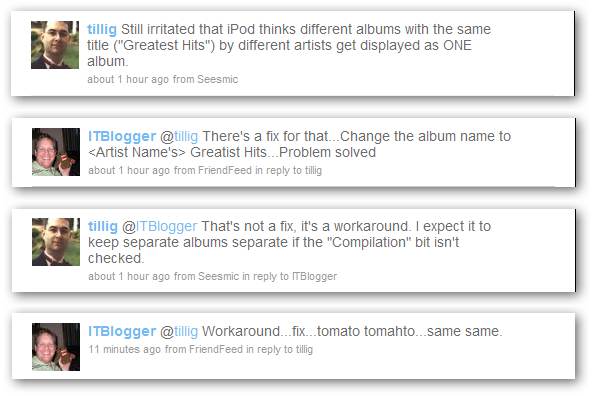My Top Five Email Pet Peeves
I, like most of you, get a lot of email. We live in an email-centric culture. I don’t mind it so much. It just seems like some folks still “don’t get it.” I’ve got some email pet peeves, I’m sure you do, too. Here are some of mine:
Subject-Line-Only Email with Long Subject
If you have a quick thing to tell people, it’s convenient to just stick the message in the subject line.
Out to lunch, back in 15 <EOM>
One less thing to open, right? That’s helpful… except when your subject line isn’t really quick.
I’m going to be late to work because I had a flat tire while I was taking my daughter to school so I’m going to the tire place to get it fixed. In by 9:30 <EOM>
Whoa, whoa, whoa. Nice shootin’, Tex. That’s not a subject-line-only email. That’s a full, put-the-message-in-the-message-body email. I have to actually scroll the subject line in the tiny Outlook subject line area to see all of that. Not helpful.
Forward Upon Forward Upon Forward
Getting jokes in the mail is de rigueur for email. It’d be nice to just get the joke, though, and not see the 350-forward-long chain of headers tracing the joke back to 1997 when it first started. It’s also nice to see the joke just one time in the email, not 17 copies of the joke as people got tired of scrolling through the headers to get there so they copied the whole thing up to the top. Again.
Here are some helpful steps for forwarding a joke:
Stop for a minute. Decide if it’s really actually funny enough to bother forwarding in the first place.
You didn’t actually stop to think, you just clicked the button. Really, this time, stop for a second. If you didn’t laugh out loud - actually laugh out loud, not just “LOL” - it’s not good enough, so don’t forward it.
After hitting the forward button, wait before hitting “Send.” You’re not done.
Delete all of the stupid headers that show up above the joke. That includes:
- The “Forwarded Message” garbage with all of the email addresses of past recipients.
- The “Hey, I saw this and thought it was great!” commentary inserted by previous recipients.
- All of the email signatures including the ones saying something about how this is a confidential email and you shouldn’t be forwarding it.
- Anything below the joke that isn’t the joke or may be duplicate copies of the joke.
Once the only thing remaining in that email is the joke, and only one copy of the joke, fine, go ahead and send it.
Giant Video File Attachments
I’m not sure about the rest of you, but even if it’s the funniest thing in the world, when someone sends me a 10MB video file through email it goes straight to the trash. I’m really not interested in downloading it, saving it somewhere, firing up a media player to watch three minutes of a kid hitting his dad in the nuts with a wiffle ball bat.
We have YouTube nowadays to host these things. Do a search for whatever it is you’re going to forward. It’s probably on there. If it’s not already on YouTube, get a free account on YouTube and post the video. Send me a link to the video, not the whole video file.
Broken Embedded Images
If you’re forwarding an email with a ton of embedded images, make sure they’re going to come through. This is sort of a tricky thing because some mail programs don’t keep them from forward to forward, in which case the recipient gets an email that has a bunch of text that’s supposed to be interspersed with humorous images but really just reads like a monkey with ADHD.
Check out these hilarious animals!
<broken image>
Mom loves to hold her babies!
<broken image>
Riding a bike!
<broken image>
Oh, no, watch out for that banana!
<broken image>
Maybe try forwarding it to yourself - really - before sending it to everyone in your address book. A dry run doesn’t cost you anything.
Check Your Facts
There are a lot of rumors out there that sound funny or cool and they compel you, almost like “the power of Christ compels you,” to click that forward button.
Stop.
Take a quick visit to Snopes, where they can dispel almost any internet rumor and include proof about whether it’s true or not.
Do not assume that other people will check your facts for you. They, your friends and other address book contacts, are assuming that you actually know what you’re talking about. You’re a smart person, why would you steer them wrong?
They’re going to visit some dinner party at the governor’s house and bring this thing up about how the pope was abducted by aliens or whatever, and the people there who could make or break their career are going to look at them like they’re complete morons because those people at the dinner party check their facts.
I’m Sure There’s More…
… but I’ll leave it at that for now. I mean, I could also go off on a diatribe about poor grammar and spelling making emails nearly unreadable, but that’s more a general written communication issue than email-specific.
What are your email pet peeves?

